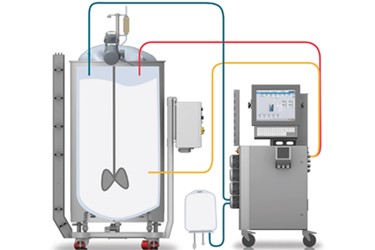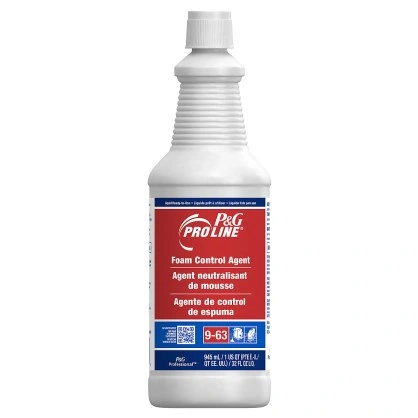A Comprehensive Guide to Implementing Foam Control Solutions in Your Procedures
Effective foam control is a critical facet of functional efficiency that typically goes forgotten. Recognizing the ins and outs of foam generation can dramatically impact both efficiency and product high quality. This overview describes the different challenges posed by foam and the diverse remedies readily available, supplying a structure for choose and implementing one of the most ideal approaches. By analyzing crucial variables such as application compatibility and personnel training, companies can enhance their foam administration initiatives. As we check out these elements, the potential for transformative improvements in your operations becomes apparent. What steps will you take following?
Understanding Foam Obstacles
Foam difficulties are a substantial issue throughout various sectors, impacting operational performance and product top quality. The development of too much foam can impede processes such as mixing, transportation, and storage space, leading to raised downtime and waste. In industries like food and beverage, pharmaceuticals, and petrochemicals, foam can disrupt assembly line, creating item incongruities and contamination threats.
Furthermore, foam can block tools performance, leading to pricey repairs and upkeep. As an example, in wastewater therapy, foam can disrupt clarifier operations, causing lower therapy efficiency and governing compliance concerns.
Understanding the underlying sources of foam generation is vital for efficient management. Variables such as surfactants, temperature variations, and agitation degrees can all add to foam production. Identifying these aspects permits industries to implement targeted approaches that minimize foam development while maintaining item integrity.
Kinds of Foam Control Solutions

Mechanical solutions involve the usage of devices such as foam skimmers or defoamers. These tools literally remove foam from the surface area of liquids, thereby stopping overflow and preserving ideal degrees in reactors and tanks. Chemical options, on the various other hand, consist of the application of defoaming agents-- compounds that interrupt the foam framework, resulting in its collapse. These agents can be silicone-based, organic, or liquid, each offering distinctive benefits depending on the application atmosphere.
Lastly, functional approaches focus on procedure modifications. This may entail customizing tools parameters, such as temperature and stress, or transforming the circulation prices of liquids to lessen foam generation. Carrying out great housekeeping methods can also mitigate foam formation by decreasing pollutants that add to foam security.
Selecting the appropriate foam control remedy entails assessing the specific needs of the operation, consisting of the kind of process, the characteristics of the products included, and safety factors to consider.
Picking the Right Products
Selecting the ideal foam control items requires a thorough understanding of the specific application and its distinct challenges. Elements such as the sort of foam, the atmosphere in which it happens, and the preferred outcome all play pivotal roles in product option. Foam Control. In markets such as food handling, it is vital to choose food-grade defoamers that conform with safety laws while efficiently taking care of foam.
Additionally, think about the viscosity of the fluid where the foam issue exists. Some products are formulated for low-viscosity applications, while others are tailored for thicker fluids. Compatibility with existing processes is another essential aspect; the selected foam control agents need to incorporate flawlessly without interfering with total procedures.
Another essential aspect is the method of application. Some items may require dilution, while others can be applied directly. Examining the simplicity of usage and the required dose can give insights into the item's efficiency and cost-effectiveness.
Application Approaches
Effective implementation methods for foam control remedies call for a systematic approach that lines up product selection with operational requirements. The initial step includes a comprehensive evaluation of the procedures where foam happens, recognizing certain locations that require treatment. By engaging cross-functional teams, including design, high quality, and manufacturing assurance, organizations can collect insights that notify the option of one of the most effective foam control items.
Next, it is essential to establish clear goals for foam reduction, making certain that these goals are possible and measurable. This might involve specifying acceptable foam levels and the timelines for implementation. Training personnel on the residential or commercial properties and application approaches of chosen foam control agents is just as crucial, as correct use is important for optimal results.
In addition, incorporating foam control solutions right into existing process requires cautious planning. Inevitably, a well-structured approach will certainly boost functional efficiency while successfully managing foam-related obstacles.
Tracking and Evaluating Effectiveness
Tracking and evaluating the performance of foam control solutions is vital for making sure that executed methods produce the desired results. This procedure involves organized data collection and analysis to examine the performance of foam control agents and techniques. Secret performance indicators (KPIs) must be developed before execution, permitting a clear baseline against which to determine development.

Assessing effectiveness also requires regular evaluations of foam control treatments and representative effectiveness. This can be accomplished with sampling and testing, allowing operators to establish if existing options are fulfilling operational demands. It is important to solicit comments from group members that communicate with these systems daily, as their insights can disclose operational subtleties that quantitative information may overlook.

Eventually, a structured monitoring and analysis structure aids identify needed adjustments, making sure that foam control remedies remain reliable, cost-effective, and straightened with organizational objectives.
Final Thought
In verdict, effective foam control remedies are important for maximizing operational effectiveness and maintaining item quality. An extensive understanding of foam difficulties, combined with the selection of proper items and execution methods, helps with the effective management of foam generation.
Applying good housekeeping techniques can likewise reduce foam formation by lowering contaminants that contribute to foam stability.
Choosing the best foam control items needs a comprehensive understanding of the specific application and its distinct difficulties (Foam Control).Successful application approaches for foam control services require a methodical method that aligns item selection with functional demands.In conclusion, effective foam control services are important for maximizing operational performance and preserving item high quality. A complete understanding of foam difficulties, combined with the choice of suitable items and execution strategies, facilitates the effective administration of Visit Website foam generation
Comments on “The Function of Foam Control in Wastewater Treatment: Ideal Methods and Techniques”